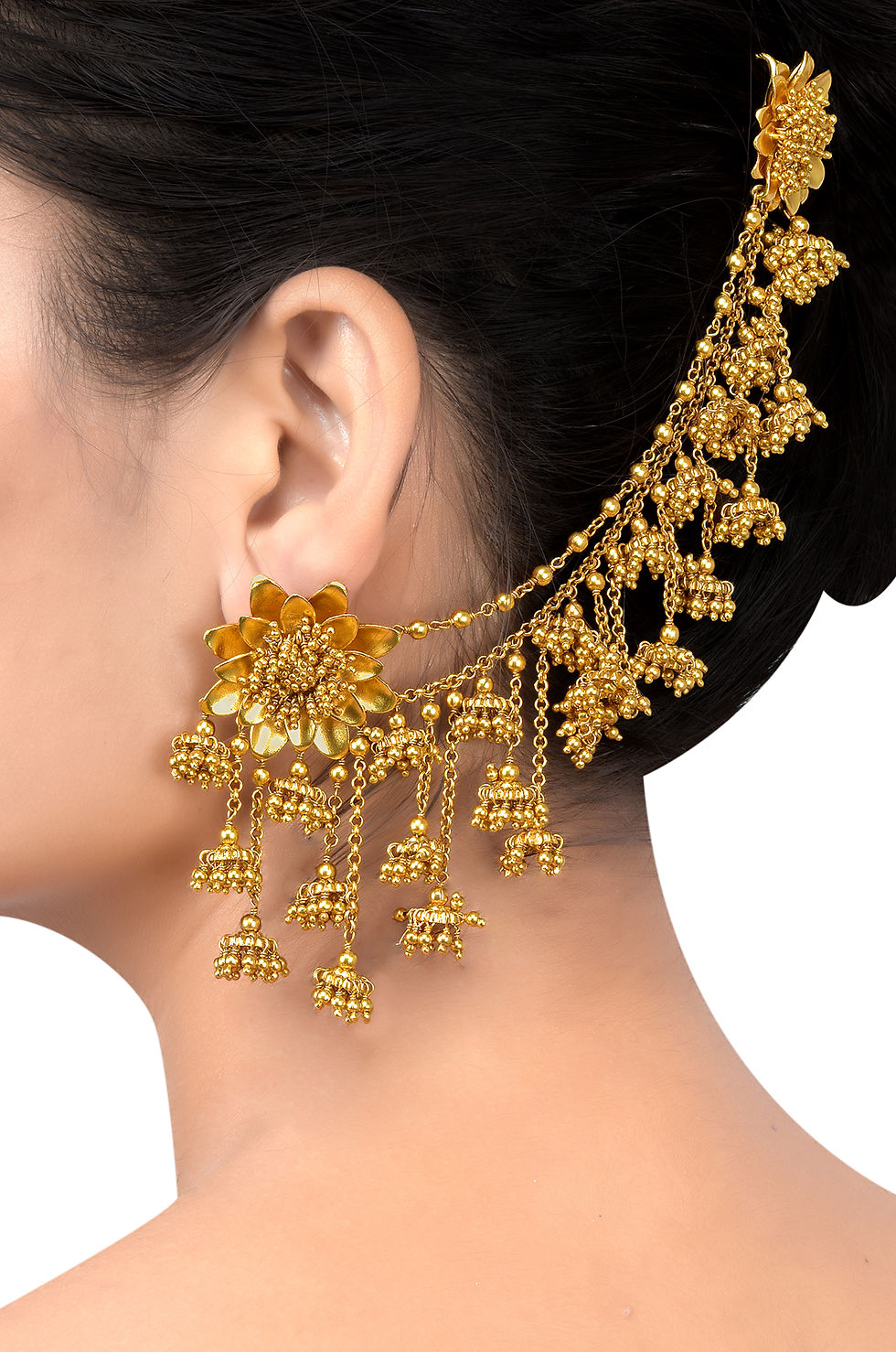The Ageless Elegance of Necklaces: A Path Through History and Fashion
- advika
- Aug 29, 2023
- 3 min read
Necklaces have long been treasured as signs of beauty, sophistication, and also emotion. Most of these lovely items of jewelry have adorned the necks of queens, empresses, and also everyday people for many years. Beyond their visual allure, necklaces have also played a significant role in indicating social identity and also personal style. In this article, we are going to take a interesting quest through the history and development of necklaces, exploring their cultural importance, design enhancements, and long lasting charm.
The Ancient Origins
The origins of necklaces could be tracked back to early civilizations. In ancient Egypt, for example, both men and women wore delicate necklaces made from materials like gold, valuable gems, as well as shells. All these necklaces often featured amulets or charms, thought to have protective or spiritual qualities. In ancient Rome, necklaces had been symbols of riches and position, with sophisticated designs crafted from a variety of alloys. Know more in detail about Traditional Earrings.

Social Importance
All through history, necklaces have held profound national significance. In many civilizations, necklaces were put on as amulets to avert evil spirits or to signify safety as well as good fortune. For example, the famous "Eye of Horus" pendant in historic Egypt was believed to safeguard the wearer from harm. In Hinduism, the mangalsutra necklace symbolizes a woman's marriage status and is an important part of marriage ceremonies. Moreover, Local American tribes designed elaborate beadwork necklaces to tell tales and also display tribal identification.
The Renaissance to the Victorian Era
In the Renaissance, necklaces experienced a revival in Europe. Delicate pearl and also gemstone necklaces adorned the necks of aristocrats and were often portrayed in the era's famous paintings. In the Victorian period, sentimentality was in fact a significant theme in jewelry design. Lockets and pendants on necklaces became well-liked, enabling individuals to carry precious keepsakes or miniature portraits of loved ones close to their hearts.
Art Nouveau and Art Deco
The late 19th and early 20th centuries saw the actual development of two significant art movements: Art Nouveau and Art Deco. These movements had a significant impact on necklace design. Art Nouveau necklaces were characterized by sweeping, natural shapes inspired naturally, showcasing sophisticated enameling and the use of materials like opals and moonstones. In contrast, Art Deco necklaces embraced geometric designs, symmetry, and also the use of attractive colored gems.
The Modern Era
The 20th century brought a shift towards more different and experimental necklace designs. The mid-century saw the rise of costume jewelry, with daring statement necklaces produced from very affordable materials. The 1960s and 1970s witnessed a resurgence of bohemian designs, with beaded and layered necklaces becoming stylish.

Modern day necklaces are a proof of creativity as well as adaptability. From minimalist items that emphasize clean lines and simplicity to luxurious necklaces dripping with gemstones, there is a necklace for almost every style and occasion today. Additionally, designers are increasingly using sustainable materials and ethical practices in crafting these pieces, aligning with modern day ideals. Know more in detail about Bahubali Earrings.
The Enduring Charm
Inspite of the ever-changing scenery of fashion, necklaces have maintained their attraction. They continue being a means of self-expression, symbolizing love, faith, and personal identity. Whether it's a delicate pendant passed down through decades or a strong statement piece acquired for a special occasion, necklaces hold emotional value that transcends trends.
Conclusion
In the world of fashion and jewelry, necklaces remain as classic icons of beauty as well as symbolism. From their historic origins steeped in cultural importance to the ever-evolving designs of the present day era, necklaces have woven themselves in to the tapestry of human history, a evidence of our long lasting fascination with adornment and expression.




ความคิดเห็น